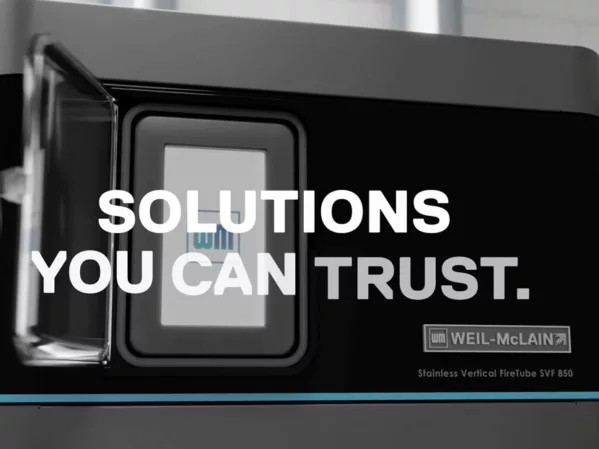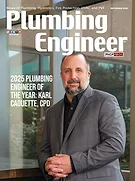The Department of Energy (DOE) is cleaning up, and they’re looking at water heaters and other gas-fired appliances to do so. This is a big effort to lower greenhouse gases and implement the current administration’s plan to make the Energy Policy and Conservation Act work toward net-zero carbon emissions, or decarbonization.
The legislation allows the DOE to set regulations on certain products and equipment, and heat pump water heaters (HPWHs) fall under the category called miscellaneous refrigeration products. These are sometimes called “hybrid” water heaters or commercial heat pump water heaters (CHPWHs).
The forthcoming enforcement of stricter technology standards and installation requirements includes some challenges, such as how these units can still be efficient in cold climates without defaulting to traditional backup heating methods. Current HPWH technology requires a significant room volume with air temperatures above freezing for optimal operation. This impacts the architectural and mechanical system building designs as well.
The majority of the air-source heat pump units include backup resistive heating that uses traditional elements, so manufacturers’ main goal will be to achieve greater capabilities using the refrigeration concept. Since the consumer is buying a compressor with refrigerant, it will initially cost more than a gas-fired burner. However, that cost can be recovered at a rate determined by the uniform energy factor (UEF) or the coefficient of performance (COP).
The COP is the commercial designation stating what an ideal system will generate in savings per $1 of energy you would have potentially “burned” in kW or BTU per hour.
Technically, it is the usable output or generated heating capacity, divided by the supplied input or energy used, as shown in the equation below. It is the mass of the water, which is dependent on the volume of the tank, multiplied by the specific heat of the water and the temperature differential between the incoming and outgoing water.

The UEF is the residential designation used by the DOE, based on actual performance testing, for water heaters that typically fall under 100 gallons of internal storage and lower energy inputs. Energy Star requires a UEF ranging from 2.5 to 4.0. Therefore, an Energy Star-certified unit will provide 250 percent to 400 percent heating efficiency when operating within optimal conditions, compared to using gas or electric resistance. With inflated gas prices, that is substantial savings for consumers on their utility payments.
Air-to-water heat pump technology provides utility savings by absorbing the already available heat from the air within the space the units are located. The heat is transferred to the water using a refrigerant medium.
Traditional water-to-water heat pump units are a great option if hot water reclaim serves as the heating source. Both lower the reliance on natural gas and, alternatively, electric generation and reduce carbon emissions created by burning fossil fuels.
Since fluid density is impacted by the atmospheric pressure, as with gas, the project elevation does need to be considered when selecting equipment. The productivity of HPWHs varies based on parameters such as ambient temperature and humidity; the best way to understand a given water heater’s performance is to look at its COP testing curve or mapping to determine how it performs in specific environmental conditions.
Significant differences are that commercial units will have more efficient backup heating capabilities at greater demands and different warranties. For additional information on residential HPWH testing, visit the National Renewable Energy Laboratory website (www.nrel.gov).
Clean Energy Initiatives
The clean energy accelerator methods being rolled out by the federal government are intended to reduce the initial hurdle, particularly costs, associated with the deployment of superior technology. Read more about the Build Back Better initiative from the Biden administration at www.whitehouse.gov/build-back-better.
The DOE is teaming up with companies in the western United States spearheading the shift to heat pump technology over traditional fuel.
The California Public Utilities Commission reacted to Senate Bill No. 1477 (https://on.nrdc.org/3Hli0O2), and Seattle banned the use of natural gas following the passing of the Washington Climate Commitment Act, Senate Bill 5126-2021-22. The changes threaten taxation for not meeting the aggressive goal driven by the Biden administration’s innovative climate change initiatives.
On the other hand, many rebates are available for installing HPWH technology. Search for your State Energy Efficient Appliance Rebate Program or visit the Northwest Energy Efficiency Alliance, www.hotwatersolutionsnw.org, to see what rebates or tax breaks might be available to your clients for their investment.
This is going to impact buildings and industry in a big way. Organizations such as the Advanced Water Heating Initiative in Portland, Ore., announced it would work to transform the U.S. HPWH/CHPWH industry to drive an increase in manufacturing, sales, installations and operation. Expect to see new heat pump water heaters and updated versions emerging from manufacturers in the near future.
In addition, the DOE is launching the E3 Initiative for energy, emissions and equity (https://bit.ly/3viZd3m). It is in the process of performing an engineering analysis on the Energy Conservation Standards for Miscellaneous Refrigeration Products that would produce cost-efficiency curves based on efficiency and cost of market equipment within the study.
The Better Buildings Challenge is another initiative of the DOE where it wants to expand participation (https://bit.ly/3JWDkv6). It partnered with California-based D+R International, which serves as the public sector subject matter expert for the challenge, and is aiding in the development of standards, specifications and test procedures for HPWHs.
All of this is to say that we should start adapting our water heater system designs accordingly and prepare to retrofit this technology into existing building system design. The HPWH units include condensate drains and can require air filter cleaning or replacement.
You also can proactively participate by helping to develop higher-performing heat pumps for cold climates. Heat pump water heaters experience standby losses for defrost cycles required to maintain operation of the equipment when the temperatures drop below freezing.
The government is open to expert opinion to address the engineering obstacles in lowering the nation’s carbon footprint. We must have provisions for essential operations, even in times of harsh weather — as Texas saw during winter storm Yuri in 2021. The power grid was devastated by freezing conditions that interrupted generation and delivery of utilities.
Proper engineering, installation, operation and maintenance are required for service equipment used in water heating and space conditioning — changes are imminent.





